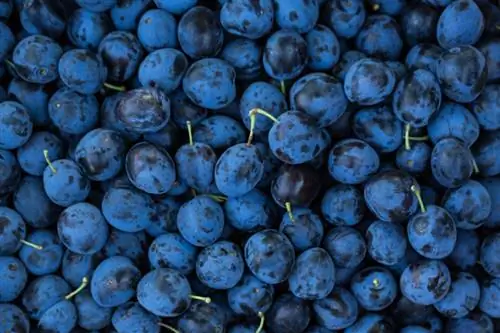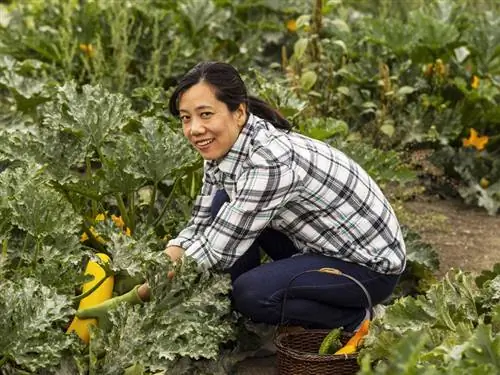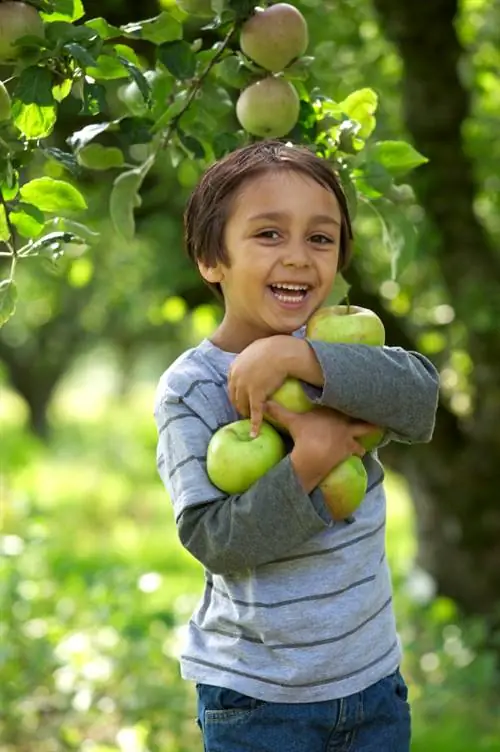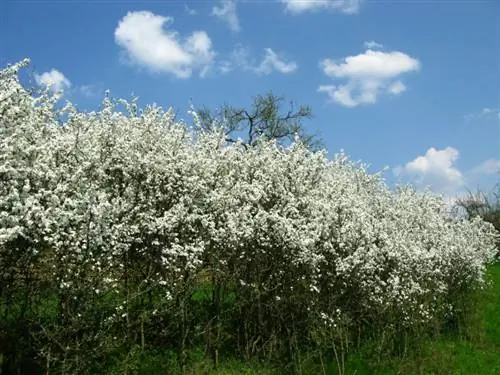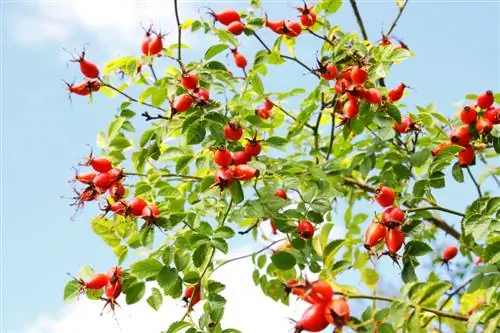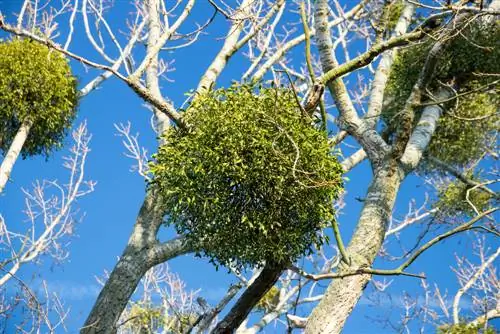- Author admin [email protected].
- Public 2023-12-16 16:46.
- Last modified 2025-01-23 11:20.
Sloe fruits with their characteristic sour, aromatic taste have been making a comeback in the kitchen in recent years. Whether as an aromatic jelly, an internally warming blackthorn fire or as a biological remedy for bleeding gums and stomach problems: the small stone fruits contain many he althy ingredients that make them a he althy highlight in the kitchen and medicine cabinet.
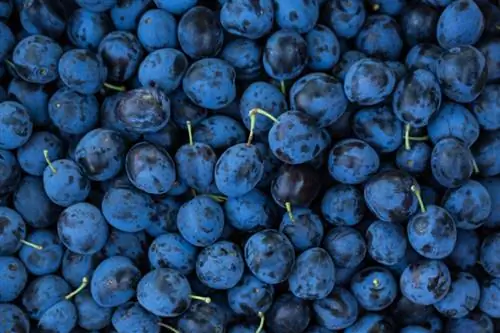
When and how should you harvest sloes?
Sloes are optimally ripe when their shell is a strong blue-black color. They can be harvested in late November to early December, ideally after the first frost, which softens the aroma. When harvesting, wear sturdy gloves and a jacket and use a breathable basket.
Ancestor of plums
The fruits and foliage of blackthorn look like miniature versions of plums, which were bred by humans by crossing blackthorn with cherry plums. In contrast to their big brothers, however, the small fruits taste very sour and, when eaten raw, leave an unpleasant furry feeling in the mouth.
Father Frost softens the taste
The aroma of the stone fruits will be a little milder and more aromatic if you pick them after the first frost in late November to early December. The sub-zero temperatures make the cell walls of the blackthorn more permeable and the starch contained in the fruit is converted into sugar.
When is the blackthorn ripe?
The small fruits have reached optimal ripeness when the peel is a strong blue-black color up to the base of the stem. If you don't want to wait until the first frost to harvest, now is the right time to pick the stone fruits. This will ensure that the delicious little berries have not already been picked by the birds and that you will hardly find any fruit left.
Spiked Delicacy
Picking sloes can be a bit of a challenge. The blackthorn is well protected by the long, very sharp spines and the small drupes have to be picked individually from the branch. When harvesting, wear sturdy gloves (€13.00 on Amazon) and a jacket so that you don't injure yourself on the shoot thorns.
Collect the delicious fruits in an air-permeable basket and process them as quickly as possible. This way the sloes don't become wrinkled or start to spoil. Wild fruits do not get along well with plastic bags - this also applies to wild fruits such as barberries or elderberries. Before further processing, unless the recipe requires otherwise, remove the large core of the fruit as it contains traces of hydrogen cyanide.
Tips & Tricks
Always pick wild sloes away from busy roads and sprayed fields. Do not “poach” in nature reserves. Harvesting blackthorn is prohibited here, as the delicious fruits serve as valuable food for numerous bird species in the cold season.

